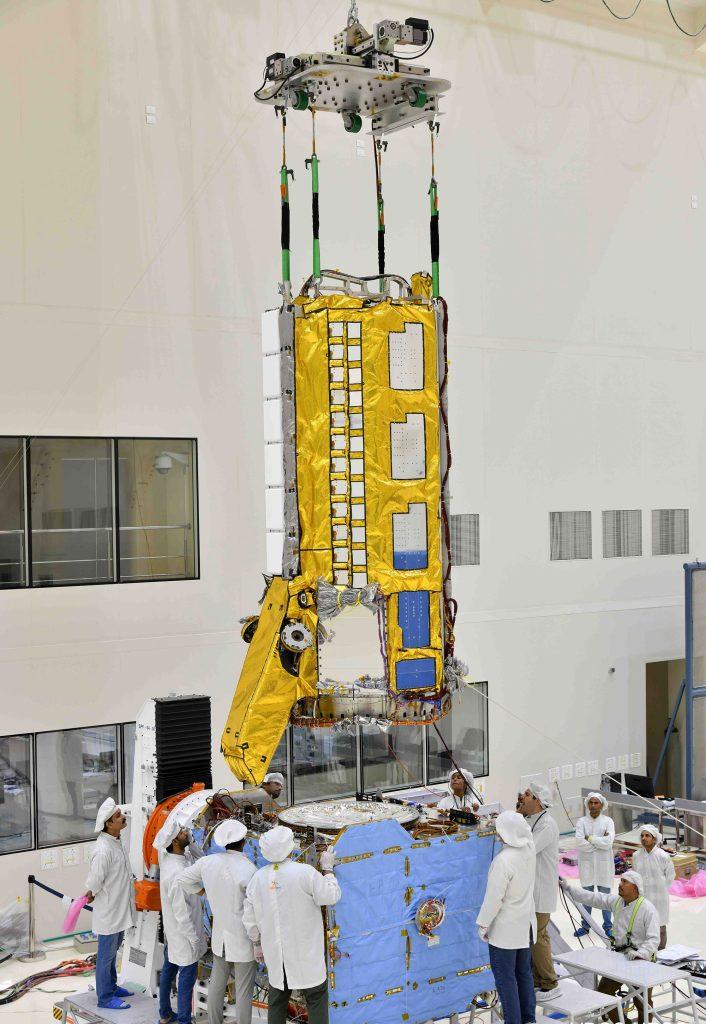Why in News?
Two major components of the NISAR satellite have been combined to create a single spacecraft in Bengaluru, India. Set to launch in early 2024, NISAR – short for NASA-ISRO Synthetic Aperture Radar, is being jointly developed by NASA and the Indian Space Research Organisation, or ISRO, to track movements of Earth’s land and ice surfaces in extremely fine detail. As NISAR monitors nearly every part of our planet at least once every 12 days, the satellite will also help scientists understand, among other observables, the dynamics of forests, wetlands, and agricultural lands.
What is the NISAR Mission?

- NISAR is an equal collaboration between NASA and ISRO and marks the first time the two agencies have cooperated on hardware development for an Earth-observing mission. JPL, which is managed for NASA by Caltech in Pasadena, leads the U.S. component of the project and is providing the mission’s L-band SAR.
- NASA is also providing the radar reflector antenna, the deployable boom, a high-rate communication subsystem for science data, GPS receivers, a solid-state recorder, and payload data subsystem. URSC, which is leading the ISRO component of the mission, is providing the spacecraft bus, the S-band SAR electronics, the launch vehicle, and associated launch services and satellite mission operations.
Features
- This flagship partnership would have major contributions from both agencies. NASA is responsible for providing the L-Band SAR payload system in which the ISRO supplied S-Band SAR payload and both these SAR systems will make use of a large size (about 12m diameter) common unfurl able reflector antenna.
- In addition, NASA would provide engineering payloads for the mission, including a Payload Data Subsystem, High-rate Science Downlink System, GPS receivers and a Solid State Recorder.
What are the Expected Benefits of NISAR?
- Earth Science: NISAR, the Earth science mission, will offer an abundance of data and information regarding changes in the Earth’s surface, natural hazards, and disturbances in ecosystems. This valuable resource will significantly contribute to our knowledge and comprehension of Earth system processes and the phenomenon of climate change.
- Disaster Management: The mission of NISAR will deliver vital information that aids in the effective management of natural disasters, including earthquakes, tsunamis, and volcanic eruptions. This information will enable faster response times and improve the assessment of risks associated with these events.
- Agriculture: NISAR data will be used to improve agriculture management and food security by providing information about crop growth, soil moisture, and land-use changes.
- Infrastructure Monitoring: The mission will provide data for infrastructure monitoring and management, such as monitoring of oil spills, urbanization, and deforestation.
- Climate Change: NISAR will help to monitor and understand the impacts of climate change on the Earth’s land surface, including melting glaciers, sea-level rise, and changes in carbon storage.
Important Takeaways for All Competitive Exams:
- ISRO Chairman: S. Somanath;
- ISRO foundation Date: 15th August, 1969;
- ISRO Founder: Dr. Vikram Sarabhai.
- NASA Headquarters: Washington, D.C., United States;
- NASA Founded: 29 July 1958, United States;
- NASA Administrator: Bill Nelson.



 Indian Olympic Medal Winners List Till N...
Indian Olympic Medal Winners List Till N...
 Who is the Inventor of the Gramophone?
Who is the Inventor of the Gramophone?
 HS Dhaliwal Appointed New DGP Of Andaman...
HS Dhaliwal Appointed New DGP Of Andaman...
